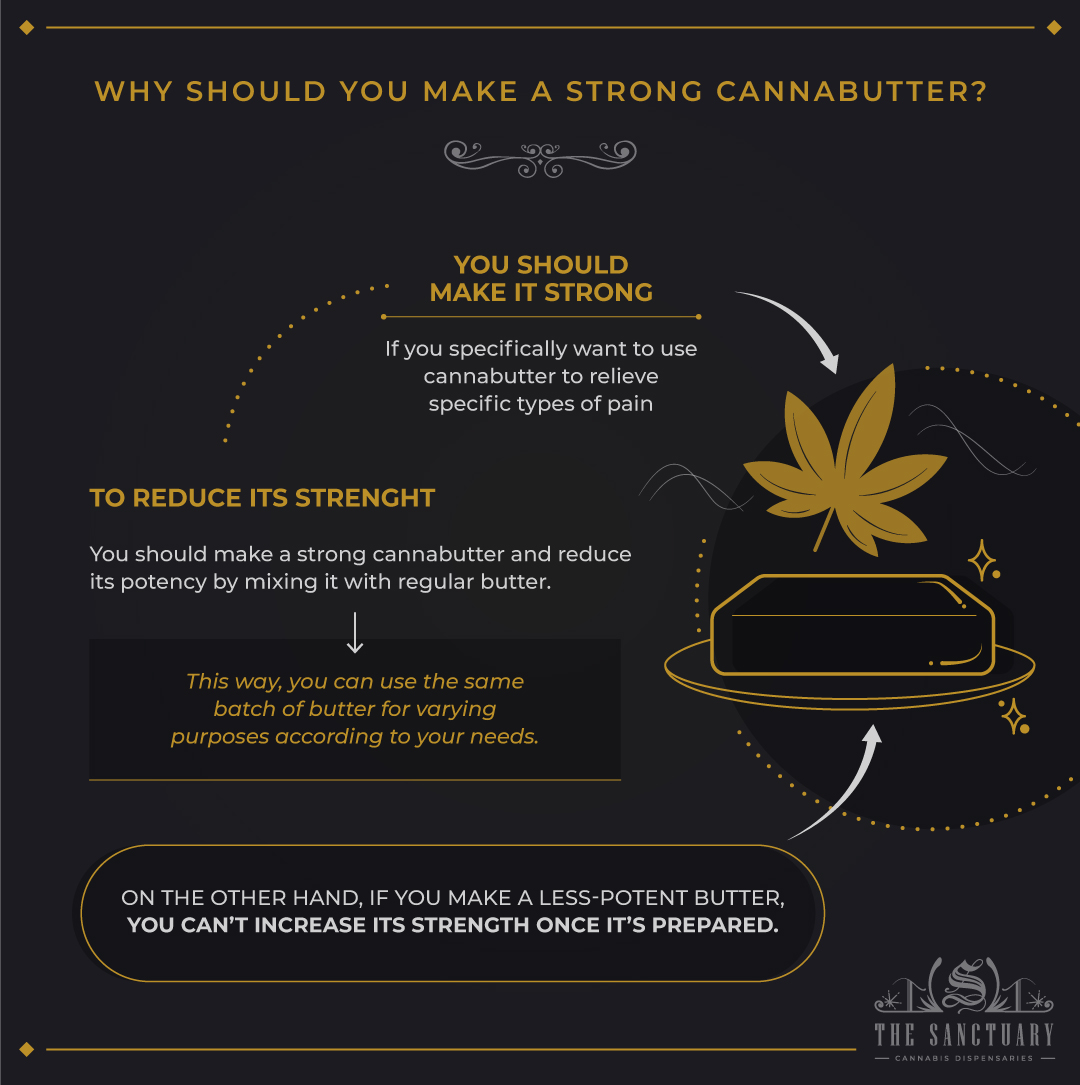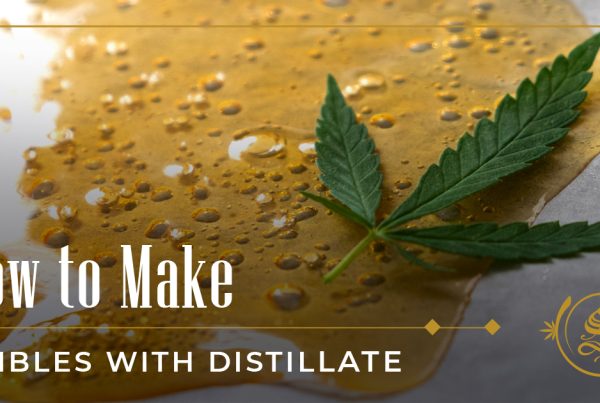Have you just pruned your cannabis plant and are looking for a creative way to utilize the trimmings and buds? Try making cannabis-infused butter or cannabutter. You can even use it to make different edibles and cherish the cannabis benefits to the fullest.
However, you can only reap the actual effects of cannabis if you make the cannabutter strong enough. For that, you need an effective, tried-and-tested recipe.
If you’re not a cooking expert, the good thing is that there is no standard recipe for making cannabutter. You can adjust the quantities and ingredients to achieve the right potency according to your preference.
Don’t know where to start? This post discusses how to make strong cannabutter in an easy way. So, let’s dive in!
Why Should You Make a Strong Cannabutter?

The extent to which cannabis can help you relieve stress varies from person to person. Some people have a high tolerance level and need a highly-potent edible to reap the plant’s benefits. However, others have low tolerance, so they are okay with diluted forms of cannabis.
If you specifically want to use cannabutter to relieve specific types of pain, you should make it strong. A medium-strength butter only works if you need relaxation after a long, tiring day.
Generally, you should make a strong cannabutter and reduce its potency by mixing it with regular butter. This way, you can use the same batch of cannabis-infused butter for varying purposes according to your needs.
On the other hand, if you make a less-potent butter, you can’t increase its strength once it’s prepared.
Steps to Prepare a Strong Cannabutter
Making cannabutter is super easy if you have all the ingredients on hand. Here are the steps involved in the process:
Step 1: Gather the Required Things
First, you must collect all the tools and ingredients in one place for easy access. You will need:
- Cannabis trimmings or buds
- Salted butter
- Cookie sheet
- Medium saucepan
- Spoon
- Potato ricer
- Water
If you don’t have cannabis trims available at home, you can easily buy packaged ones from the nearest dispensaries. You can also grind the dried flowers and use them in the recipe.
Many people use a slow cooker or a crock pot to make a cannabutter without producing a foul odor. But this method may reduce the butter’s potency. The best way is to boil the cannabis in water and butter in a pot without any lid. It releases a powerful aroma, so be prepared for it!
Step 2: Decarboxylate the Cannabis
Decarboxylation of cannabis is vital to achieve an effective cannabutter. This technique activates the cannabinoids of the cannabis, making the resulting butter more potent and longer-lasting.
Here is the most authentic way of decarboxylating cannabis:
- Put your cannabis trims or buds in a food processor or grinder to break them as finely as possible.
- Now, spread the cannabis evenly on a cookie sheet in a tray.
- Preheat the oven to 260 degrees.
- Finally, place the tray in the oven for 45 minutes and remove it afterward.
Step 3: Mix the Ingredients and Boil Them
Now is the time to combine all the ingredients and put them to a boil. Here is what you need to do:
- First, fill the pot to ¼ or ⅓ with cannabis.
- Add one cup of salted butter for every four cups of water. The pot must be almost full.
- Put the mixture to boil on a high burner.
- Leave it for four hours and stir in between.
If you think the mixture has reduced too much, add water to make it even. It will also prevent the cannabis and butter from scorching. If you’re boiling the pot on a stove, check the mixture’s consistency every 15 to 30 minutes.
Step 4: Strain the Mixture
Once boiled, the next step is to separate the solid ingredients from the liquid. You can do it by pouring the mixture into a container via a fine strainer. The residual hot cannabis trims may also have sufficient liquid butter, so squeeze them with your hands to extract the cannabutter completely.
You’d have to do this when the butter is warm enough to be liquid and cold enough to touch. That’s slightly warmer than the room temperature.
If you’re looking for the easiest way, use a potato ricer. It reduces the time and energy required in manually straining and squeezing cannabis.
Step 5: Cool Down the Butter and Store It
At the end of your straining and squeezing process, you will have the liquid cannabis with oil separated on the top and water on the bottom. Let the pot rest for 30 to 45 minutes, and then put it in the fridge to cool off completely.
Take the container out the next day. The oil will be transformed into cannabutter, a hardened form of butter. Remove it carefully from the pot, as the brown water underneath it can cause a lot of mess. Discard the water after extracting the butter.
Finally, store the cannabutter in the fridge for up to 6 months.
Remember, this recipe yields really strong cannabutter, so you’d have to add regular butter to adjust its potency based on your needs. But if you have a high tolerance for cannabis and want to get the most potent effects of cannabis, use this cannabutter as is. You will be thanking us later!
Note: You can also use unsalted butter in this recipe for a healthier option.
Conclusion
Cannabutter is a delicious way to reap the magical cannabis benefits. You can prepare it in different potencies, but not every strength will work to relieve your pain or stress. Low-potent cannabutter works amazingly to relax your mind. Meanwhile, a strong cannabutter is ideal for easing different types of pain.
It’s wise to make strong cannabutter and add regular butter to it later to adjust its potency, depending on your needs.
You can prepare a high-strength cannabutter by mixing decarboxylated cannabis trims with butter and water and boiling them. Then, extract the liquid butter from the mixture and let it harden into a solid cannabutter. Enjoy!






